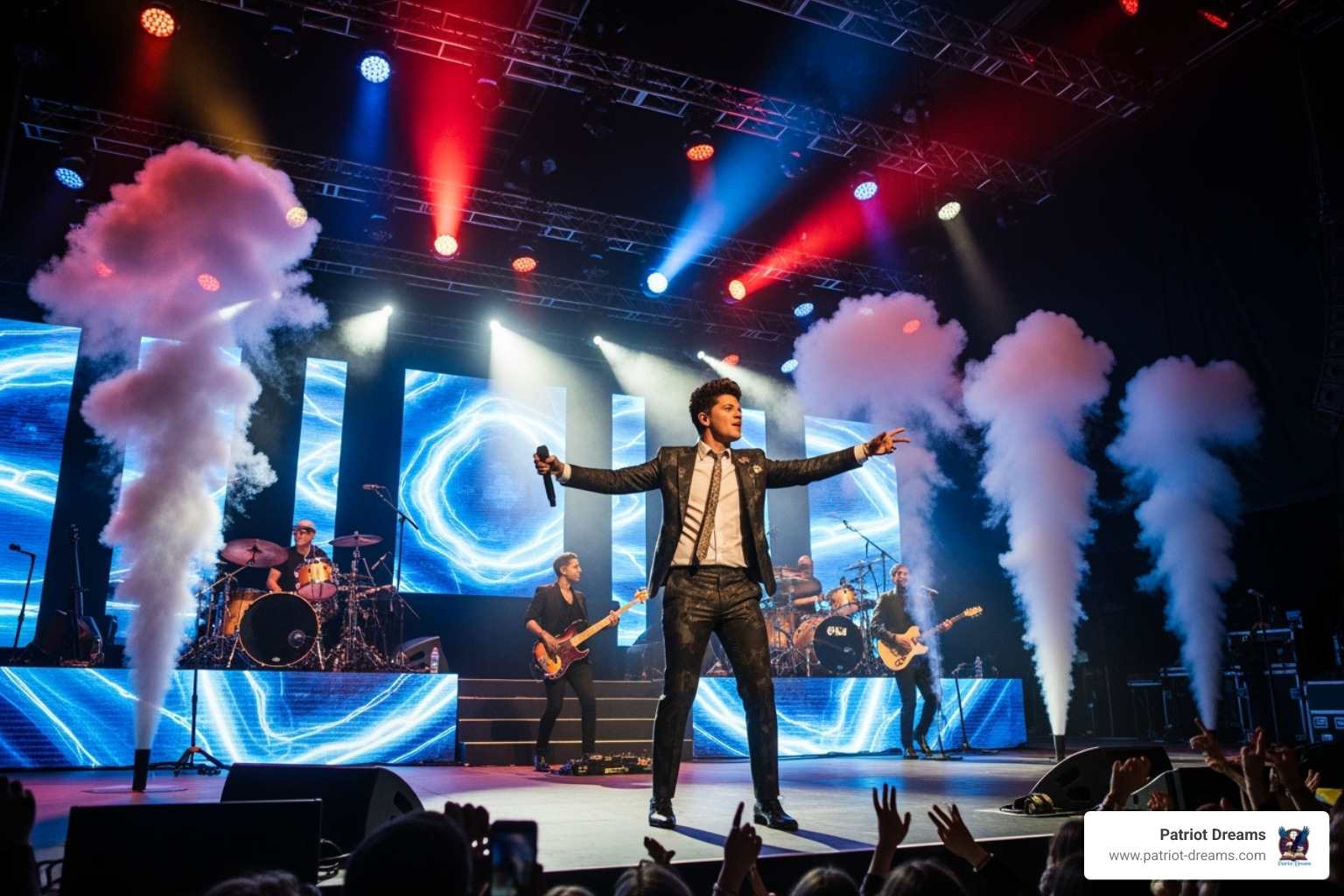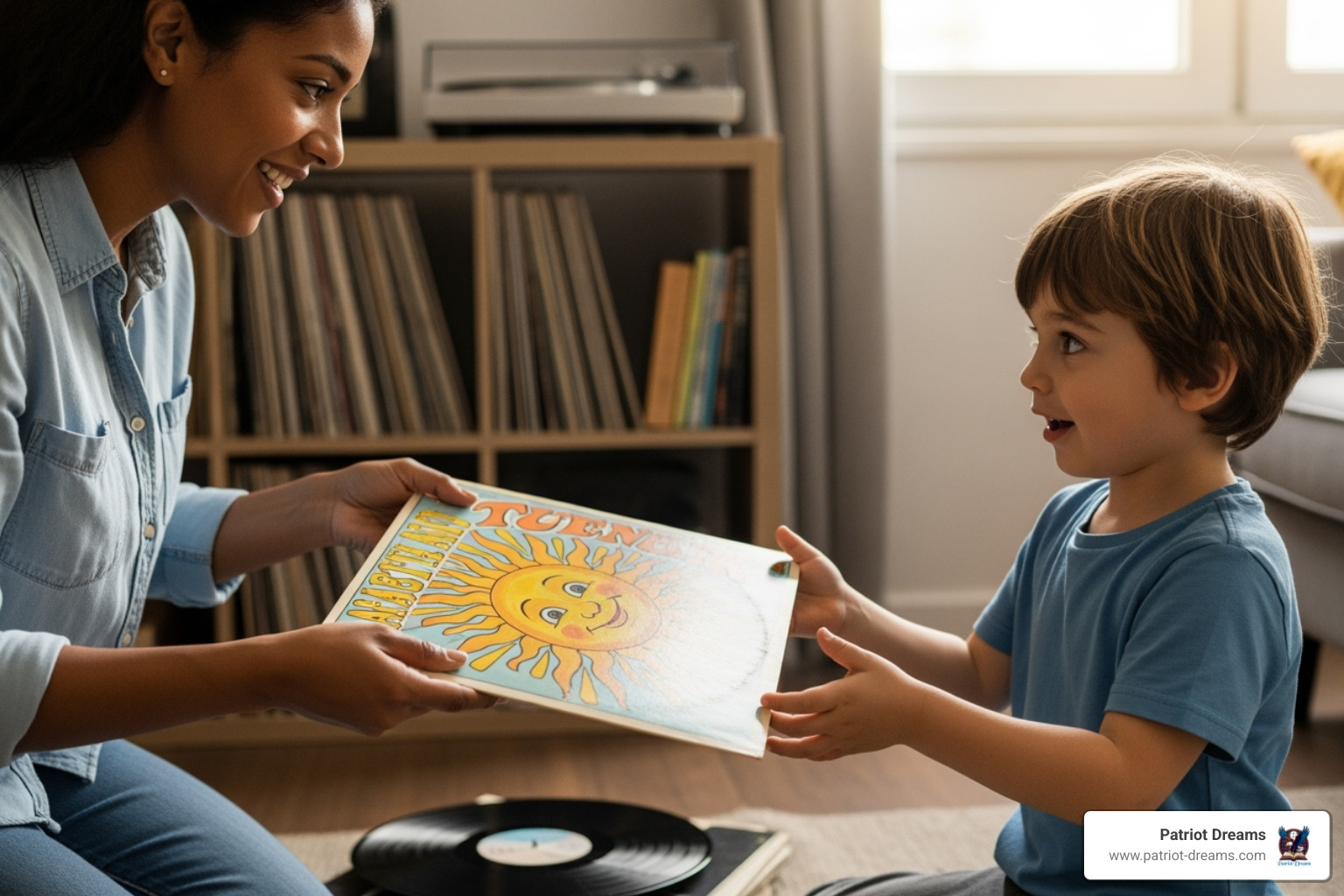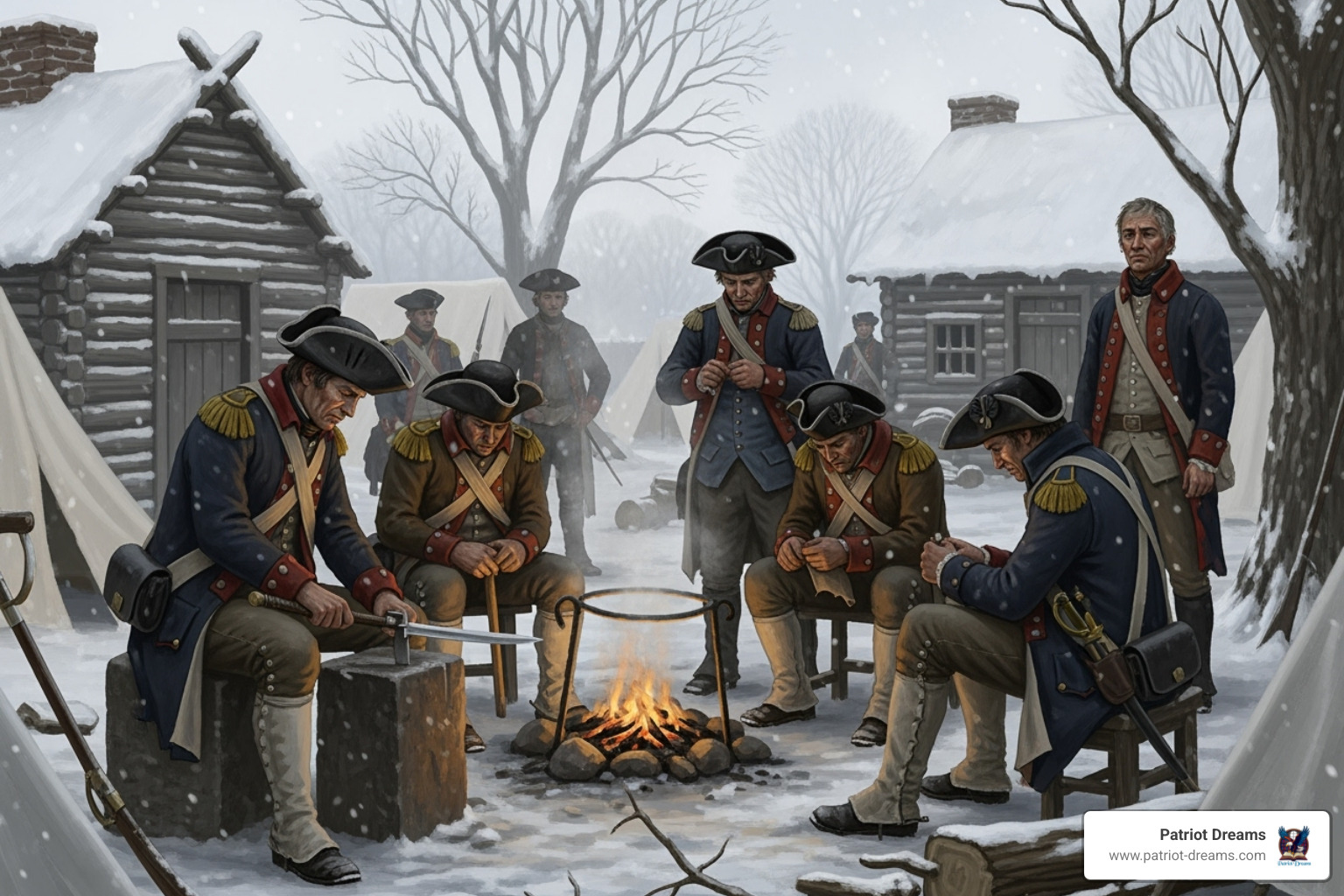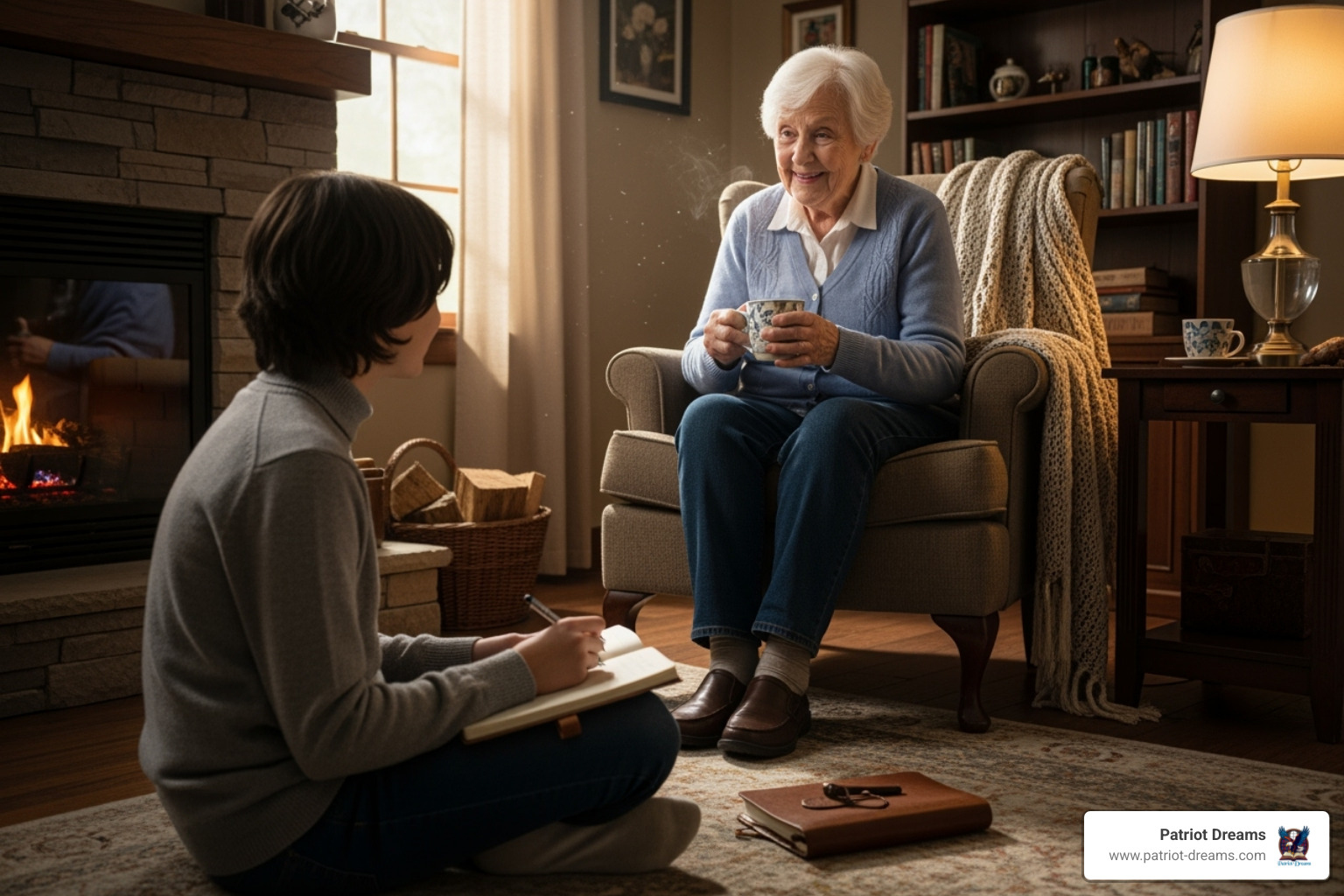Echoes of the Past: How 20th-Century America Lives On in Today’s Hit Songs

Why Music Feels Like Coming Home
Echoes of the Past: How 20th-Century America Lives On in Today's Hit Songs is about understanding how the music of the 20th century continues to shape and inspire the hits we hear today. Modern artists regularly draw from classic American sounds—from rock and roll's rebellious energy to soul's heartfelt emotion to disco's joyful rhythms—creating a bridge between generations through melody and memory.
Quick Answer: How 20th-Century Music Lives in Today's Hits
- Sampling and Interpolation: Artists like Jay-Z and Doja Cat weave classic R&B, funk, and soul samples into new songs
- Production Techniques: Modern hits recreate vintage recording methods—the "Wall of Sound," analog warmth, live instrumentation
- Genre Revival: The Weeknd channels 80s synth-pop, Bruno Mars brings back Motown grooves, Dua Lipa revives 70s disco
- Storytelling Traditions: Hip-hop continues folk music's narrative legacy, connecting personal stories to broader American experiences
- Nostalgic Comfort: During uncertain times (9/11, 2008 recession, COVID-19), music reached back to familiar sounds for solace
Have you ever heard a song on the radio and thought, "This sounds like something my parents would have loved"? You're not wrong. Today's biggest hits are having a conversation with the past—sometimes quietly, sometimes loudly, but always with respect for what came before.
For many, the story begins in the mid-1950s, when rock and roll emerged as what music researchers call "the single most important historical development in twentieth-century popular music." From that moment forward, American music became a living timeline, each generation building on the last.
What makes this especially beautiful is how it connects us. A grandmother who danced to Motown in the 1960s can tap her foot to Bruno Mars today. A parent who grew up with 80s synth-pop recognizes those same shimmering sounds in The Weeknd's music. These aren't just coincidences—they're intentional echoes, carefully woven into the fabric of modern songs.
The recording studio became the magical place where these echoes were captured. Engineers and producers—the unsung heroes working behind the scenes—learned to bottle lightning in the form of records. They found that certain sounds could transport listeners to specific moments in time, creating what one scholar calls "historical consciousness in popular music."
Today's artists understand this power. They know that familiar sounds can feel like home, especially when the world feels uncertain. Research shows that during times of collective stress—whether after September 11, 2001, during the 2008 economic recession, or throughout the COVID-19 pandemic—music with nostalgic elements provided comfort and connection.
But this isn't just about looking backward. It's about honoring where we've been while moving forward together. Each sample, each vintage production technique, each nod to a classic sound is a way of saying: "We remember. We're grateful. And we're building something new on this foundation you gave us."

The Birth of a New Sound: How Rock & Roll Brought Us Together
Picture yourself in mid-1950s America. Families are gathering around new television sets. Cars are getting bigger and shinier. The country is changing, growing, dreaming. And then, through the speakers of a diner jukebox, something completely new begins to play.
Rock and roll didn't just arrive—it exploded. Music researchers today still call it the single most important development in 20th-century popular music, and not just in America, but around the entire world. This wasn't simply a new style of music. It was a force that brought people together in ways nothing else could.
What made rock and roll so special? It took the deep emotion of rhythm and blues, the spiritual power of gospel, and the storytelling heart of country music, then blended them all together into something that made you want to move. It was honest. It was energetic. And most importantly, it spoke to everyone.
Teenagers across America suddenly had their sound. Elvis Presley brought charisma and a voice that could shift from tender to powerful in a heartbeat. But let's not forget Big Mama Thornton, whose original recording of "Hound Dog" laid down a groove so powerful it still echoes through music today. These artists weren't just entertainers—they were pioneers, showing us that music could be a bridge between different worlds.
Here's what made rock and roll truly beautiful: it crossed lines that other parts of society still struggled with. In dance halls and record stores, at sock hops and on the radio, people from different backgrounds found themselves moving to the same beat. The music didn't ask where you came from or what you looked like. It just invited you to feel something real and share that feeling with everyone around you.
This was music as democracy in action—a cultural force that said everyone's voice mattered, everyone's story deserved to be heard. You can explore more about how these cultural movements shaped our nation in American Cultural History.
As rock and roll grew more popular, it naturally became part of everyday American life. Record companies found ways to share this exciting new sound with homes across the country. The music that started in small clubs and local radio stations became a cornerstone of American culture, something families could enjoy together. This wasn't about losing authenticity—it was about spreading joy to as many people as possible.
The foundation that rock and roll built in the 1950s? It's still holding up today's music. Every time a modern pop song uses a driving rhythm, every time an artist blends different styles together, every time music brings diverse groups of people together—that's the legacy of rock and roll. That's Echoes of the Past: How 20th-Century America Lives On in Today's Hit Songs.
And isn't that something wonderful? A sound born in the 1950s still has the power to make us feel connected, excited, and hopeful today.
From Studio Magic to Your Living Room: The Unsung Heroes of Music
Have you ever wondered how your favorite songs actually make their way from an artist's imagination into your home? The answer lies in a place that transformed music forever: the recording studio.
Before the mid-20th century, music history was mostly about famous composers and their written works—think symphonies and operas carefully preserved on paper. But when rock and roll and popular music exploded onto the scene, this old approach simply didn't work anymore. Why? Because the story of Echoes of the Past: How 20th-Century America Lives On in Today's Hit Songs is inseparably connected to the story of records and, most importantly, the recording studio itself.
The studio wasn't just a room with microphones. It became something much more magical—a creative space where sound could be shaped, layered, and perfected in ways that were impossible in a live performance. It was where the magic happened, where ordinary performances transformed into extraordinary recordings.
This shift changed everything about how we experience music. Recorded music eventually replaced sheet music as the main way people enjoyed songs at home, creating the foundation for the entire music industry we know today. Suddenly, you didn't need to play an instrument or attend a concert to hear your favorite artists—you could bring them right into your living room.
But behind every great recording were the unsung heroes: the studio engineers and record producers. These talented individuals, often working quietly behind the glass, played absolutely crucial roles in shaping the sounds we love. They were the architects, the craftspeople, the wizards who made the magic real.
Think about Phil Spector's "Wall of Sound"—a technique that layered dozens of instruments together to create a rich, almost orchestral texture that made songs feel enormous and emotional. Or consider the Funk Brothers, Motown's incredible house band, whose musicianship was carefully captured and shaped by brilliant engineers and producers to create those timeless, soulful hits that still make us want to dance.
These producers and engineers didn't perform on stage, but their fingerprints are all over the music that defines generations. They understood how to capture not just notes, but feeling. They knew how to make a recording feel intimate, as if the artist was singing just for you in your own home.
The recording studio became the place where artistic visions transformed into tangible memories—something you could hold in your hands, play whenever you wanted, and share with the people you love. It made music personal and accessible in ways previous generations could never have imagined.
This innovative spirit also opened doors to entirely new creative possibilities. The techniques developed in these studios paved the way for future innovations like sampling, where artists could weave pieces of older recordings into new songs, creating beautiful conversations between past and present. For a deeper look at how this technique revolutionized music production, explore A walk down the history of sampling in music.
The recording studio gave us something precious: the ability to capture moments in time and carry them forward. Those engineers and producers helped create the soundtrack of American life—music that feels like coming home, no matter how many years have passed.
Echoes of the Past: How 20th-Century America Lives On in Today's Hit Songs
The beauty of music is its timelessness. The sounds, stories, and innovations of 20th-century America didn't fade with the changing decades—they became the rich soil from which today's hit songs grow. When you listen closely to contemporary music, you'll hear something wonderful: a conversation happening across time. Modern artists are reaching back to touch the melodies and rhythms that moved earlier generations, creating bridges between past and present that help us all feel a little more connected.
This isn't just nostalgia for nostalgia's sake. These echoes of the past represent something deeper—a shared musical language that speaks to who we are as Americans, regardless of when we were born.
The Soulful Heartbeat: Motown and R&B in Modern Pop
There's something about those classic soul sounds that just reaches right into your heart, isn't there? The polished perfection of Motown, with its unforgettable melodies and impeccable production, gave us a soundtrack of hope and joy during the 1960s. Artists like James Brown brought raw energy and irresistible grooves, while Stax Records offered a grittier, more emotional take on soul music. These weren't just songs—they were expressions of love, community, and enduring resilience that resonated across racial and social lines.

Today, that soulful heartbeat keeps right on pumping. When Bruno Mars takes the stage with a full band, you can feel the spirit of those classic soul revues. He doesn't just borrow from 60s and 70s soul—he honors it, capturing the vocal stylings, the tight musicianship, and the pure joy that made that era so special. His music reminds us that themes of love and togetherness never go out of style.
Other artists have kept this flame burning too. Alicia Keys, with her gospel-influenced vocals and heartfelt piano, brought comfort to a hurting nation after September 11, 2001, with songs like "Fallin'" that echoed classic soul's emotional honesty. Amy Winehouse's "Rehab" masterfully recreated mid-Sixties R&B sounds, even using that famous "Wall of Sound" production technique to tell a deeply personal story in a familiar sonic language.
These artists aren't simply copying what came before. They're reinterpreting these sounds with fresh perspectives, proving that the themes of love, resilience, and community remain as relevant today as they were decades ago. If you'd like to hear more of these rich, soulful sounds that shaped America, we invite you to explore American History Audio.
The Shimmer of Disco and Synths: Echoes of the Past That Make Us Dance
Sometimes, what we need most is music that makes us want to move—music that lifts our spirits and helps us forget our worries for a little while. That's exactly what disco did in the 1970s, filling dance floors with infectious beats and joyful energy. Then the 1980s arrived with shimmering synthesizers and drum machines, bringing a futuristic optimism that felt like anything was possible.
Those sounds never really left us. They've come roaring back in today's hits, reminding us that joy and celebration are always in style. The Weeknd's music, especially his album After Hours, is steeped in 80s synth-pop, complete with driving beats and atmospheric sounds that transport you right back to that decade. His song "Blinding Lights" became one of the biggest hits of all time by channeling that classic new wave energy—it's a masterclass in how old sounds can feel brand new.
Dua Lipa took a similar approach with her Future Nostalgia album. Songs like "Don't Start Now" capture the pure essence of 70s disco, with funky basslines and soaring vocals that would feel right at home on any classic dance floor. Even Doja Cat got in on the action with "Say So," which opens with filtered, retro sounds straight from the disco era before blossoming into something contemporary and fresh.
These artists are following in the footsteps of legends like Nile Rodgers, whose guitar work defined disco and funk, and Daft Punk, who spent their entire career building bridges between past and present dance music. Together, they prove that sounds of joy and celebration create connections across generations—your parents' favorite dance songs might sound surprisingly similar to yours.
The Storytelling of a Generation: Echoes of the Past in Hip-Hop and Folk
Music has always been one of humanity's most powerful ways to tell stories. Long before recorded music, people gathered to hear tales set to melody—stories of everyday life, struggles overcome, and dreams pursued. In America, this tradition runs especially deep, from the folk singers who chronicled the experiences of working people to the country storytellers who captured life's simple truths.
That storytelling tradition is alive and well today, though it sometimes wears different clothes. Hip-hop, with its innovative use of sampling, creates a beautiful conversation with the past. When Jay-Z weaves a sample from Nina Simone into one of his tracks, he's doing something profound—he's connecting his story to hers, adding layers of history and emotion to his narrative. Each sample is like a thread, stitching together the fabric of American musical experience across decades.
This practice of sampling isn't just clever production—it's a way of honoring what came before while building something new. Hip-hop artists draw inspiration from the musical innovations and iconic works of 20th-century soul, jazz, funk, and R&B, creating a living archive where old voices speak through new songs.
But you don't need sampling to carry on the storytelling tradition. Taylor Swift crafts intricate narratives about love, friendship, and self-findy that echo the personal, observational style of classic folk songwriters. Kacey Musgraves brings fresh perspectives to country music while honoring the heartfelt storytelling that has defined the genre for generations. These artists, each in their own way, continue the vital work of telling the stories of American life—the joys, the heartaches, the everyday moments that connect us all.
Echoes of the Past: How 20th-Century America Lives On in Today's Hit Songs isn't just about musical techniques or production styles. It's about how each generation finds ways to honor those who came before while adding their own voice to the ongoing song of America. It's about connection, memory, and the beautiful truth that great stories—and great melodies—are truly timeless.
Why These Old Songs Still Feel Like Home
Have you ever heard a song and suddenly found yourself somewhere else entirely? Maybe you're back in your childhood kitchen, watching your mom make breakfast. Or you're in the backseat of the family car on a summer road trip. Music has this incredible power to transport us through time, and there's actually a beautiful reason why.
Jeremy Eichler, a music critic, describes this phenomenon as music being a "time machine." It's not just a poetic idea—music genuinely triggers involuntary memory, bringing us back to specific moments with remarkable clarity. And for most of us, those moments are wrapped up in the people we love, especially our families.

Think about your own childhood for a moment. Chances are, you grew up listening to your parents' favorite music. Maybe it was classic rock echoing through the house—Pink Floyd or Led Zeppelin on weekend mornings. Perhaps it was Michael Jackson or David Bowie during family dinners. This early exposure to music from previous generations creates something precious: a sense of familiarity and comfort that lasts a lifetime.
Ty French, a young music lover, shared how his parents' passion for 80s and 90s classic rock shaped his entire musical identity. Madison Willacey grew up in a home rich with cultural heritage—her family's Jamaican, Belizean, Honduran, and Italian roots meant she heard everything from soul and gospel to 80s pop. To this day, Elvis Presley's "Viva Las Vegas" brings back warm childhood memories. These stories aren't unusual—they're universal. Parental influence plays a huge role in developing our generational tastes, creating bridges between what was and what is.
Here's something fascinating: we're actually listening to more old music now than ever before. Thanks to streaming technology, the entire history of recorded music sits at our fingertips. Those songs your grandparents danced to, the records your parents wore out playing—they're all just a search away. The growth of streaming services has made it incredibly easy to stumble upon classics, whether through curated playlists or algorithms that say, "If you like this, you might love this song from 1967."
This accessibility means that the music that shaped past generations is constantly available to shape ours too. Whether you're exploring through an Educational Audio App or simply following a "throwback" playlist, you're participating in something beautiful: a conversation across time.
What makes this even more meaningful is how music helps us truly feel history, not just know it intellectually. Jeremy Eichler explains that music provides visceral routes to understanding the past. It helps us sense that the worlds before us are organically connected to our own lives. When we hear a song from a different era, we're not just learning about history—we're experiencing the emotions, the hopes, the joys and struggles of people who lived it. We respond to both the tragedies and the idealism of past eras in a deeply personal way.
That's why these old songs feel like home. They're not just melodies and lyrics—they're memories, connections, and stories passed down through generations. They remind us that we're part of something larger, a continuing story that began long before us and will continue long after. To explore more about this remarkable connection between music and memory, take a look at Why music can be a time machine to the past.
When you hear Echoes of the Past: How 20th-Century America Lives On in Today's Hit Songs, you're hearing your family's story, your community's story, and America's story all woven together. And that's a beautiful thing to carry forward.
Conclusion: The Song of America Keeps Playing
There's something profoundly beautiful about how music connects us across time. As we've explored Echoes of the Past: How 20th-Century America Lives On in Today's Hit Songs, we've finded that music isn't just entertainment—it's a living conversation between generations, a connecting thread that weaves our stories together through shared melodies and timeless emotions.
Think about it: when Bruno Mars channels the smooth soul of Motown, when The Weeknd brings back those shimmering 80s synths, when Jay-Z samples Nina Simone—they're not just making music. They're honoring a legacy, keeping alive the sounds that once filled jukeboxes in 1950s diners, living rooms in the 1970s, and dance floors in the 1980s. They're reminding us that the human experience—our joys, our heartaches, our dreams—is universal and timeless.
This continuous dialogue between past and present enriches all our lives. It offers comfort when we need it most, connection when we feel alone, and a deeper appreciation for the creativity and resilience that built our nation's musical heritage. From rock and roll's rebellious spirit to R&B's soulful depths, from disco's joyful shimmer to hip-hop's powerful storytelling, these sounds didn't fade away—they evolved, adapted, and found new life in today's hits.
At Patriot Dreams, we understand this power of stories to connect and inspire. Just as today's artists preserve and reinterpret the sounds of yesterday, we believe in preserving the narratives—both personal and historical—that define our American heritage. Every family has its own soundtrack, its own stories worth telling and remembering. The beauty of these shared stories lies in their ability to remind us of our collective journey, our resilience, and the enduring spirit that binds us together.
Music shows us that we're all part of something bigger, something that started long before we were born and will continue long after. It reminds us that the best parts of who we are—our creativity, our hope, our ability to find joy even in difficult times—are worth celebrating and passing down.
We invite you to explore the stories that shape our nation's song and find how the past continues to resonate in our present. Explore the stories that shape our nation's song in America: 250 Years in the Making—because every note, every memory, and every story helps us understand where we've been and where we're going, together. The song of America keeps playing, and we all have a part to sing.
Join the Patriot Dreams Community
Download the app today and start your journey through American history and personal legacy.

Explore Our Latest Insights
Dive into stories that shape our American legacy.





